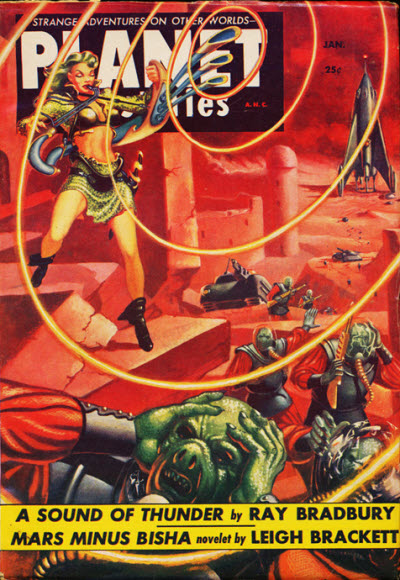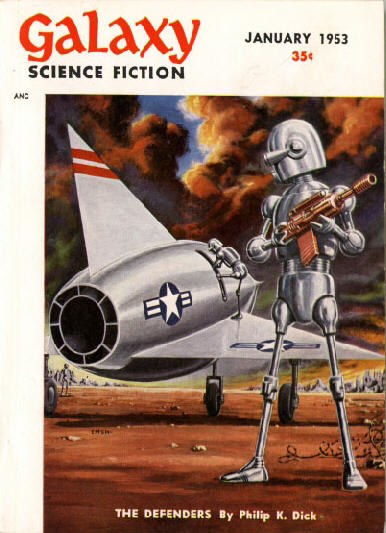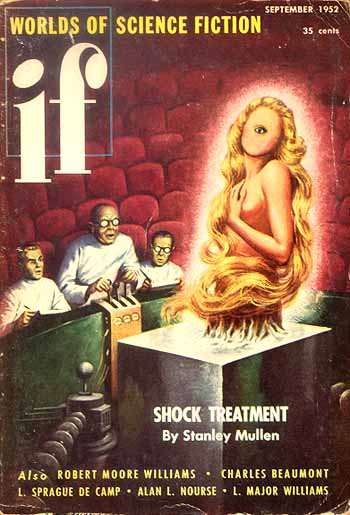|
The Short Happy Life Of The Brown Oxford (collection)
''The Short Happy Life of the Brown Oxford'' is a collection of science fiction stories by American writer Philip K. Dick. It was first published by Citadel Twilight in 1990 and reprints Volume I of ''The Collected Stories of Philip K. Dick''. Many of the stories had originally appeared in the magazines ''Fantasy and Science Fiction'', ''Planet Stories'', '' If'', ''Galaxy Science Fiction'', ''Imagination'', ''Space Science Fiction'', ''Fantastic Story Magazine'', ''Amazing Stories'', ''Future'', ''Cosmos'', ''Fantasy Fiction'', ''Beyond Fantasy Fiction'', ''Thrilling Wonder Stories'' and ''Startling Stories''. The collection was reprinted by Citadel Press in 2003 under the title Paycheck and Other Classic Stories. Contents * Preface, from a letter to John Betancourt * Foreword, by Steven Owen Godersky * Introduction, by Roger Zelazny * "Stability" * "Roog" * " The Little Movement" * "Beyond Lies the Wub" * " The Gun" * "The Skull" * " The Defenders" * " Mr. Spaceship" * "Piper ... [...More Info...] [...Related Items...] OR: [Wikipedia] [Google] [Baidu] |
Philip K
Philip, also Phillip, is a male given name, derived from the Greek (''Philippos'', lit. "horse-loving" or "fond of horses"), from a compound of (''philos'', "dear", "loved", "loving") and (''hippos'', "horse"). Prominent Philips who popularized the name include kings of Macedonia and one of the apostles of early Christianity. ''Philip'' has many alternative spellings. One derivation often used as a surname is Phillips. It was also found during ancient Greek times with two Ps as Philippides and Philippos. It has many diminutive (or even hypocoristic) forms including Phil, Philly, Lip, Pip, Pep or Peps. There are also feminine forms such as Philippine and Philippa. Antiquity Kings of Macedon * Philip I of Macedon * Philip II of Macedon, father of Alexander the Great * Philip III of Macedon, half-brother of Alexander the Great * Philip IV of Macedon * Philip V of Macedon New Testament * Philip the Apostle * Philip the Evangelist Others * Philippus of Croton (c. 6th centur ... [...More Info...] [...Related Items...] OR: [Wikipedia] [Google] [Baidu] |
Roog (story)
"Roog" is a science fiction short story by American writer Philip K. Dick. It was his first sold work, although not his first published story.Rickman, Gregg (1989), '' To The High Castle: Philip K. Dick: A Life 1928-1963'', Long Beach, Ca.: Fragments West/The Valentine Press, p.388 Plot summary "Roog" is a story told from the point of view of a dog named Boris, who observes his masters carefully storing food in containers outside of their house day after day. Unbeknownst to the dog, these are the human's trash cans for garbage. The dog is later horrified to witness some food being 'stolen' by garbagemen who the dog believes are predatory carnivores from another planet. The dog comes to know these beings as 'Roogs', and tries to warn his master of each 'theft' with cries of 'Roog!' 'Roog!'. The humans, unable to comprehend the hound's message, think the dog is just being rowdy. Thus they attribute the sound the dog makes to be the sound that all dogs make when they are excited: ... [...More Info...] [...Related Items...] OR: [Wikipedia] [Google] [Baidu] |
The Short Happy Life Of The Brown Oxford
"The Short Happy Life of the Brown Oxford" is a science fiction short story by American writer Philip K. Dick, first published in the January, 1954 edition of ''The Magazine of Fantasy & Science Fiction'' and later in '' Beyond Lies the Wub'' in 1984 and in '' The Short Happy Life of the Brown Oxford'', a collection of Philip K. Dick short stories, in 1990. Plot summary The story is told from a first person perspective of a young man and his friend, a scientist named Doc Rupert Labyrinth (also appearing in Dick's short story "The Preserving Machine ''The Preserving Machine'' is a collection of science fiction stories by American writer Philip K. Dick. It was first published by Ace Books in 1969 with cover art by Leo and Diane Dillon as part of their Ace Science Fiction Specials series. ..."), who develops a new device called The Animator, which gives life to otherwise inanimate objects. Doc thinks that the machine does not work, and sells it to the narrator for 5 dollars. T ... [...More Info...] [...Related Items...] OR: [Wikipedia] [Google] [Baidu] |
The Crystal Crypt
"The Crystal Crypt" is a science fiction short story by American writer Philip K. Dick, first published in the January 1954 edition of ''Planet Stories'' and later published in ''Beyond Lies the Wub'' in 1988. Plot summary The story is set in the distant future where Earth and Mars are on the verge of war. The last spaceship to leave Mars headed for Earth is stopped and searched by Martian soldiers, who are looking for three saboteurs who destroyed a Martian city. They are not found, and the ship continues towards Earth. On board the space ship, a business man by the name of Thacher meets a young woman and two men, who tell that they are the people sought by the Martians, and proceed to tell Thacher the story of how they did not destroy the Martian city, but used a device to reduce the entire city to fit in a tiny globe, which they smuggled on board the ship. The city is to be used as a bargaining chip against Mars in the upcoming war. Thacher reveals that he is a Martian secret a ... [...More Info...] [...Related Items...] OR: [Wikipedia] [Google] [Baidu] |
The Indefatigable Frog
"The Indefatigable Frog" is a science fiction short story by American writer Philip K. Dick, first published in the July 1953 edition of ''Fantastic Story Magazine'', and later in ''The Collected Stories of Philip K. Dick ''The Collected Stories of Philip K. Dick'' is a collection of 118 science fiction stories by American writer Philip K. Dick. It was first published by Underwood-Miller in 1987 as a five volume set. See Philip K. Dick bibliography for informatio ...''. It has since been republished several times, including in '' Beyond Lies the Wub'' in 1988. The story centers around two college professors, Hardy and Grote, who argue about one of Zeno's Paradoxes, called The dichotomy paradox, where a frog wants to get up from a well, but each jump is half of the previous one. That way, Hardy argues, the frog will never exit the well, while Grote argues the opposite: that the frog will eventually escape from the well. The Dean of the college wants to settle this age-old parad ... [...More Info...] [...Related Items...] OR: [Wikipedia] [Google] [Baidu] |
The Variable Man
"The Variable Man" is a science fiction novella by American writer Philip K. Dick, which he wrote and sold before he had an agent. It was first published in the British magazine ''Space Science Fiction'' (British version) Vol. 2 No. 2, July 1953, and in the American version on September 1953, with the US publication illustrated by Alex Ebel. Despite the magazine cover dates it is unclear whether the first publication was in the UK or in the United States where magazines tended to be published farther ahead of their cover dates than in the UK. ''The Variable Man'' can be found in several collections of Dick's short stories, including ''The Variable Man'' and ''The Short Happy Life of the Brown Oxford''. Copyright status "The Variable Man" is in the public domain in the United States because it was published in the United States between January 1, 1950 and December 31, 1963 but copyright was not renewed with the United States Copyright Office within a year period beginning on Decem ... [...More Info...] [...Related Items...] OR: [Wikipedia] [Google] [Baidu] |
Expendable (short Story)
"Expendable" is a science fiction short story by American writer Philip K. Dick. It was first published in '' The Magazine of Fantasy and Science Fiction'' issue of July 1953. The plot centers on an unnamed human being caught in the middle of the ongoing, million year conflict between the degenerate descendants of the insects (Earth's original inhabitants) and humans (the invading species). Dick later explained where the inspiration for the story came from: "I got the idea when a fly buzzed by my head one day and I imagined (paranoia Paranoia is an instinct or thought process that is believed to be heavily influenced by anxiety or fear, often to the point of delusion and irrationality. Paranoid thinking typically includes persecutory beliefs, or beliefs of conspiracy concer ... indeed!) that it was laughing at me."Philip K. Dick. ''The Collected Stories of Philip K. Dick, Volume 1: The Short Happy Life of the Brown Oxford''. Citadel Press. 1987. p 403. References External li ... [...More Info...] [...Related Items...] OR: [Wikipedia] [Google] [Baidu] |
The Preserving Machine (short Story)
"The Preserving Machine" is a science fiction short story by American writer Philip K. Dick. It was first published in the June 1953 issue of ''Magazine of Fantasy and Science Fiction'', and is included in a later collection of the same name, ''The Preserving Machine''. "The Preserving Machine" was originally a companion piece to another Doc Labyrinth story, "Left Shoe, My Foot", later published as " The Short Happy Life of the Brown Oxford". Plot summary Doc Labyrinth fears for the safety of the fragile works of high culture, particularly classical music, in the event of the apocalypse. Accordingly, he orders a machine to be built that will transform musical scores into animals capable of surviving and defending themselves on their own. The machine successfully transforms several composers' works into various animals-- Bach pieces into little beetles, Schubert songs into a lamb-like creature, and so forth. The Doctor, joyful at his success, releases them into the world; but ... [...More Info...] [...Related Items...] OR: [Wikipedia] [Google] [Baidu] |
The Infinites
"The Infinites" is a science fiction short story by American writer Philip K. Dick, first published in 1953 in the May issue of ''Planet Stories''. It has since been republished several times, including in ''Beyond Lies the Wub'' in 1988 and in ''The Collected Stories of Philip K. Dick ''The Collected Stories of Philip K. Dick'' is a collection of 118 science fiction stories by American writer Philip K. Dick. It was first published by Underwood-Miller in 1987 as a five volume set. See Philip K. Dick bibliography for informati ...''. Plot summary The plot centers around a crew of three on board a spaceship which scouts asteroid fields for new materials which can be mined. Led by Crispin Eller, the crew (which consists of second in command Blake and Silvia) land on an asteroid and send a pack of hamsters in order to check the radiation levels. Upon retrieving the hamsters, they discover that they've received a large doses of radiation and are lifeless. Later, the crew themselv ... [...More Info...] [...Related Items...] OR: [Wikipedia] [Google] [Baidu] |
Piper In The Woods
"Piper in the Woods" is a science fiction short story by American writer Philip K. Dick, first published in 1953 in'' Imagination'', and later in'' The Collected Stories of Philip K. Dick ''The Collected Stories of Philip K. Dick'' is a collection of 118 science fiction stories by American writer Philip K. Dick. It was first published by Underwood-Miller in 1987 as a five volume set. See Philip K. Dick bibliography for informatio ...''. It has since been republished several times, including in Beyond Lies the Wub in 1988. Plot summary Henry Harris, an army doctor at a garrison on Earth is puzzled by a case of a soldier who returns from the asteroid Y-3, and claims that he's a plant. When several more men return from Y-3, each thinking they're a plant, Harris travels to the asteroid to solve the puzzle. He soon finds out that the soldiers claim that a certain indigenous people on the asteroid called "Pipers", who live in the woods, made them realize that they're plants. Harris ... [...More Info...] [...Related Items...] OR: [Wikipedia] [Google] [Baidu] |
The Defenders (short Story)
"The Defenders" is a 1953 science fiction novelette by American author Philip K. Dick, and the basis for Dick's 1964 novel '' The Penultimate Truth''. It is one of several of his stories to be expanded into a novel. The story was first published in the January 1953 issue of ''Galaxy Science Fiction''. In 1956, the story was adapted for the radio program ''X Minus One'' by George Lefferts. Plot Eight years ago a nuclear war Nuclear warfare, also known as atomic warfare, is a theoretical military conflict or prepared political strategy that deploys nuclear weaponry. Nuclear weapons are weapons of mass destruction; in contrast to conventional warfare, nuclear w ... began between the United States and the Soviet Union. American survivors evacuated to gigantic bunkers miles under ground. Sophisticated, radioactivity-immune robots called "leadys" continue fighting the war on the devastated surface that is too dangerous for humans. The Soviets have similarly evacuated un ... [...More Info...] [...Related Items...] OR: [Wikipedia] [Google] [Baidu] |
The Skull (short Story)
"The Skull" is a science fiction short story by American writer Philip K. Dick, first published in 1952 in '' If'', and later in ''The Collected Stories of Philip K. Dick''. It has since been republished several times, including in ''Beyond Lies the Wub "Beyond Lies the Wub" is a science fiction short story by American writer Philip K. Dick. It was his first published genre story, originally appearing in ''Planet Stories'' in July 1952.Damien Broderick, ''Transrealist Fiction: Writing in the ...'' in 1988. Plot synopsis Conger, the protagonist, is given a chance to get out of jail if he agrees to kill a man who had died 200 years ago in the 1960's. This man gave a speech urging non-violent lifestyle before being arrested and killed by police. Months later those that listened to this speech reported seeing the man again after his death and believed it a sign of his divinity. From the teachings of the man emerged a cult that quickly spread, eventually becoming opposed to tech ... [...More Info...] [...Related Items...] OR: [Wikipedia] [Google] [Baidu] |



